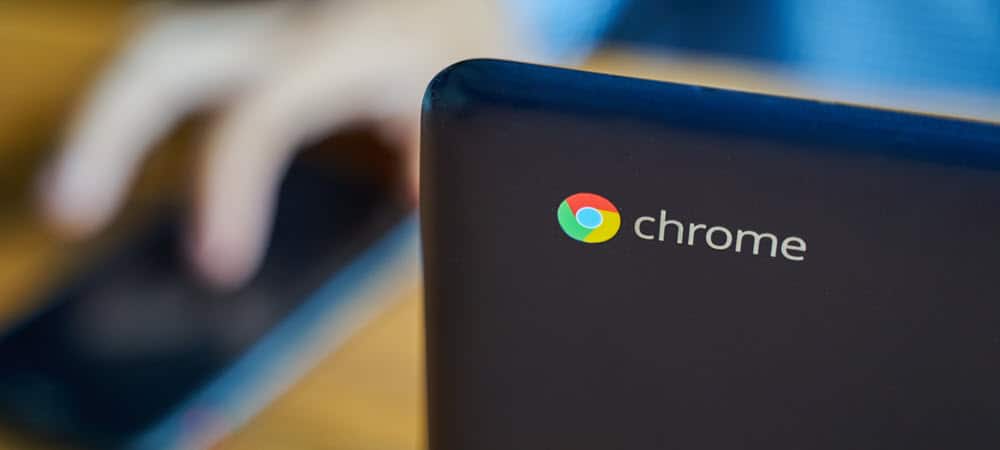The modern-day Chromebook comes with the ease of handling several devices that are attached to it and makes computing extremely easy. A greater number of USB ports are introduced for the attachment of modern devices at the same time, which also saves from additional efforts. Although it is easy to connect basic devices to the Chromebook, even these minor attachments can be daunting if they are not done the right way.
In this blog post, we have explained the wireless connectivity of a mouse to a Chromebook. Attaching a wired mouse to a Chromebook is effortless, but you need to follow a few extra steps for a wireless mouse attachment.
What is the Need to Attach a Wireless Mouse to a Chromebook?
We live in a fast computing age where we have come out of the conventional way of performing computing tasks. In a regular laptop, it could be slightly difficult for professionals to utilize the small space of the touchpad to perform certain tasks. This is why the need to attach an outside device, such as a mouse, to the laptop is ubiquitous.
If you are a Google Chrome user, you are more into scrolling through Google products, extended documents, and listings, which could be tiring at a certain point. A Chromebook works just like a laptop, so attaching a mouse to it makes exactly the same sense as it does on a laptop. With a USB port, connecting a wired mouse is like a no-brainer. But since we are adapting to more innovative computing devices and solutions like auto clickers for chromebook, several wireless mouse options are available in the market that do not require you to bother over the wired connectivity of the mouse. And also because it is the latest, mess-free, and easier to use from the comfort of your hand.
Types of Wireless Mouse

Before looking into the wireless connectivity of the mouse, let’s figure out the different types of mouse that you may choose according to your preference.
Optical Mouse:
This type of mouse uses LED light to bounce back to trigger a certain electrical signal. When the optical mouse is moved on the surface, the LED light inside it touches the surface, reflects back, and turns into an electrical signal. With the help of this signal, you can control the cursor movements on the screen. The surface on which the optical mouse is moved should be flat so the signals produced are smooth.
Laser mouse:
If you are looking for a more durable option than an optical mouse, you may consider purchasing a laser mouse that works by producing a laser beam. The laser light is produced when the mouse is moved on the surface, and this beam of light is converted into an electrical signal. This electric signal helps the user control the cursor on the computer screen. Since the laser mouse works on the principle of laser, it is not affected by any dust or dirt particles coming its way, making it a more reliable type of mouse.
Trackball mouse:
If you want your wireless mouse to put less strain on the wrist, you may get yourself a trackball mouse. This type of mouse is a hybrid between an optical mouse and a laser mouse and can be seamlessly used on flat and non-flat surfaces.
The Wireless Mouse Connectivity Technology
This is yet another important consideration regarding the connectivity of the mouse. Mouse manufacturers have introduced Bluetooth connectivity to attach a wireless mouse and Radiofrequency Mouse.
Bluetooth Mouse: A Bluetooth Mouse is connected to the Chromebook through Bluetooth protocol.
Radio Frequency Mouse: This mouse connectivity technology works by using an RF transmitter and a receiver plugged into the USB port. This wireless connectivity ensures that the signals are transmitted without the need for wires.
Since almost all types of Chromebooks support Bluetooth and Radio Frequency connectivity, you may choose any type of mouse to connect with your device. However, it is always a safe option to ask if the mouse supports connectivity to the Chromebook.
How to Connect a Wireless Mouse to a Chromebook via Bluetooth?
Connecting your mouse to the Chromebook requires no wired connectivity if it is Bluetooth-enabled. You may follow the given steps to connect a mouse to your Chromebook via Bluetooth.
- On a Bluetooth mouse, there is a power button at the bottom. Turn the switch ON, and you will see a red light that indicates that the mouse is on. Now, put it back on the surface of the mouse pad.
- Now, on your Chromebook, select the Bluetooth icon and go to the lower right corner of the taskbar. Enable the toggle switch on if it is off.
- Once the Bluetooth is enabled, you will see the scanning of the devices nearby that have their Bluetooth enabled. When your Chromebook shows the wireless mouse, pair it with it to establish a connection. In case the Bluetooth mouse does not appear in the scanned devices, you turn off the mouse, turn it on and then scan it. Once the mouse has established connectivity with your Chromebook, it will also be connected in the future.
- Once the connection between your mouse and Chromebook is established, you will see the cursor moving on the screen when you move your fingers on the mouse.
How to Connect Radio Frequency Mouse to a Chromebook?
The majority of Chromebook users are now preferring RF Mouse for wireless connectivity. However, when purchasing a Radio Frequency Mouse, it is important to consider its compatibility with the Chromebook.
- A Radio Frequency Mouse comes with a tiny receiver plugged into the Chromebook’s USB port.
- Now, switch on the mouse from turning on its power button that resides beneath the mouse. Once it is on, it will connect to the receiver that you have plugged inside the Chromebook’s USB port.
- That’s It! You may start using your RF Mouse soon after the connectivity without any configuration settings.
Bottom Line
A Chromebook usually does not come with an external mouse, and you have to navigate using the Chromebook’s built-in touchpad or an on-screen virtual mouse. You may need to use a traditional mouse with your Chromebook during certain tasks, such as when using graphics software, playing a game, or using Chrome OS’s desktop mode to browse the web. With Bluetooth and Radio Frequency Mouse connectivity, you can easily attach a wireless mouse to your Chromebook and do lots of scrolling without straining your wrist. Here are some more tweaks for chrome users.
Frequently Asked Questions (FAQs)
Can you use a USB mouse with a Chromebook?
Yes, it is possible to use a USB mouse with a Chromebook however, in the latest Chromebooks, you may have to use a USB-Type A and USB-C type adapter to connect the mouse with it.
Is every mouse adaptable with the ChromeOS?
Not every mouse is adaptable with every Chromebook. If you are planning to purchase a wireless device to connect with your Chromebook, look for its adaptability with the ChromeOS.
Can I use a USB in a Chromebook?
Yes, you can use a USB with a Chromebook by attaching it to the USB port on the side of the Chromebook. However, when using a USB with the Chromebook, ensure that it is not encrypted, and once the USB files are viewed and you have done the required task with the USB, plug it out for the system’s safety concerns.
Why doesn’t my Chromebook recognize my USB device?
A temporary error could prevent the Chromebook from recognizing your USB device. If this is the case, disconnect the device and turn off the Chromebook for a few minutes. Then, turn on the Chromebook and connect the USB device again.
Do all Chromebooks have USB ports?
Yes, all Chromebooks come with USB ports located on the sides of the Chromebook. Usually, one or more USB-A type ports support connectivity with several devices.